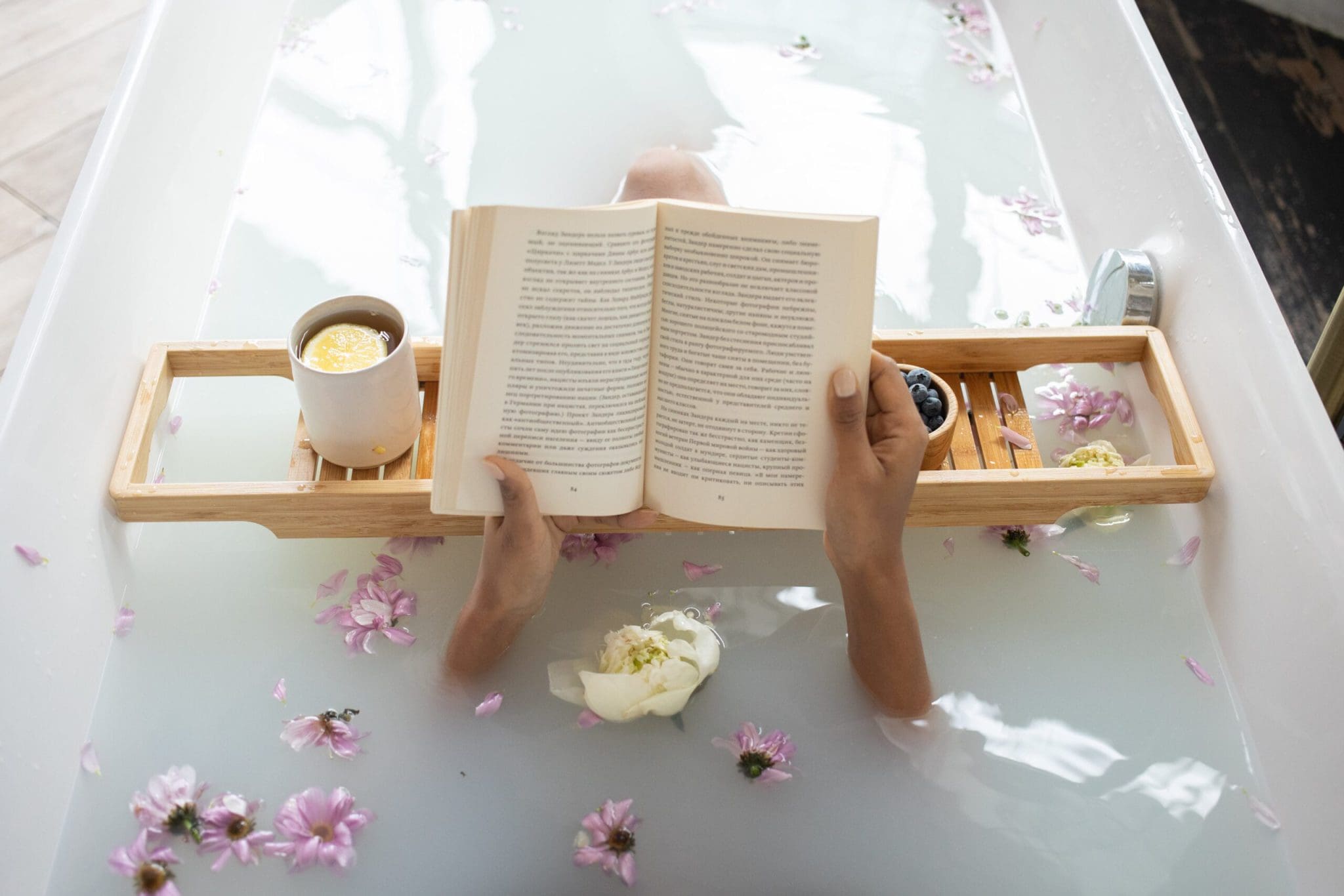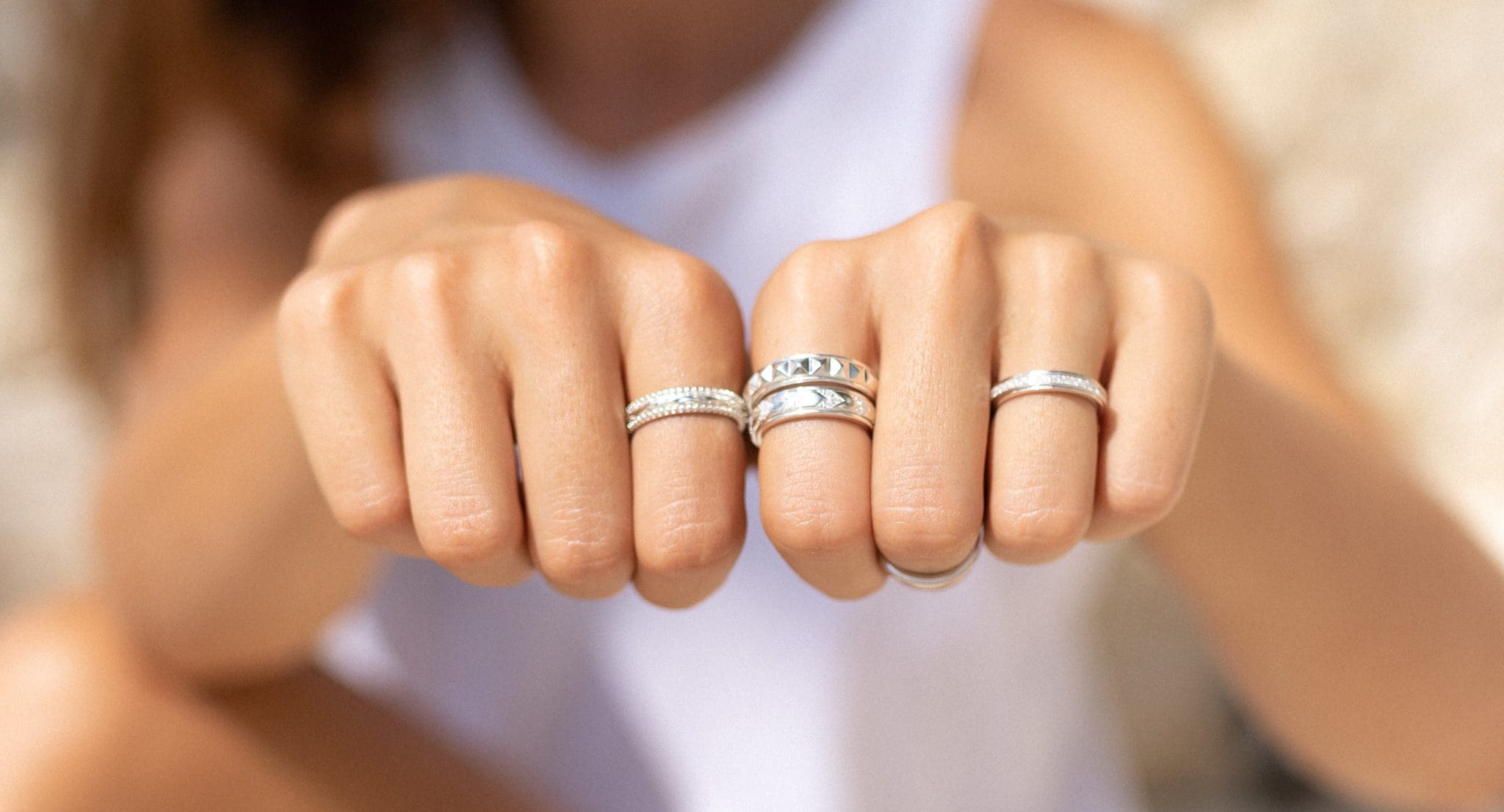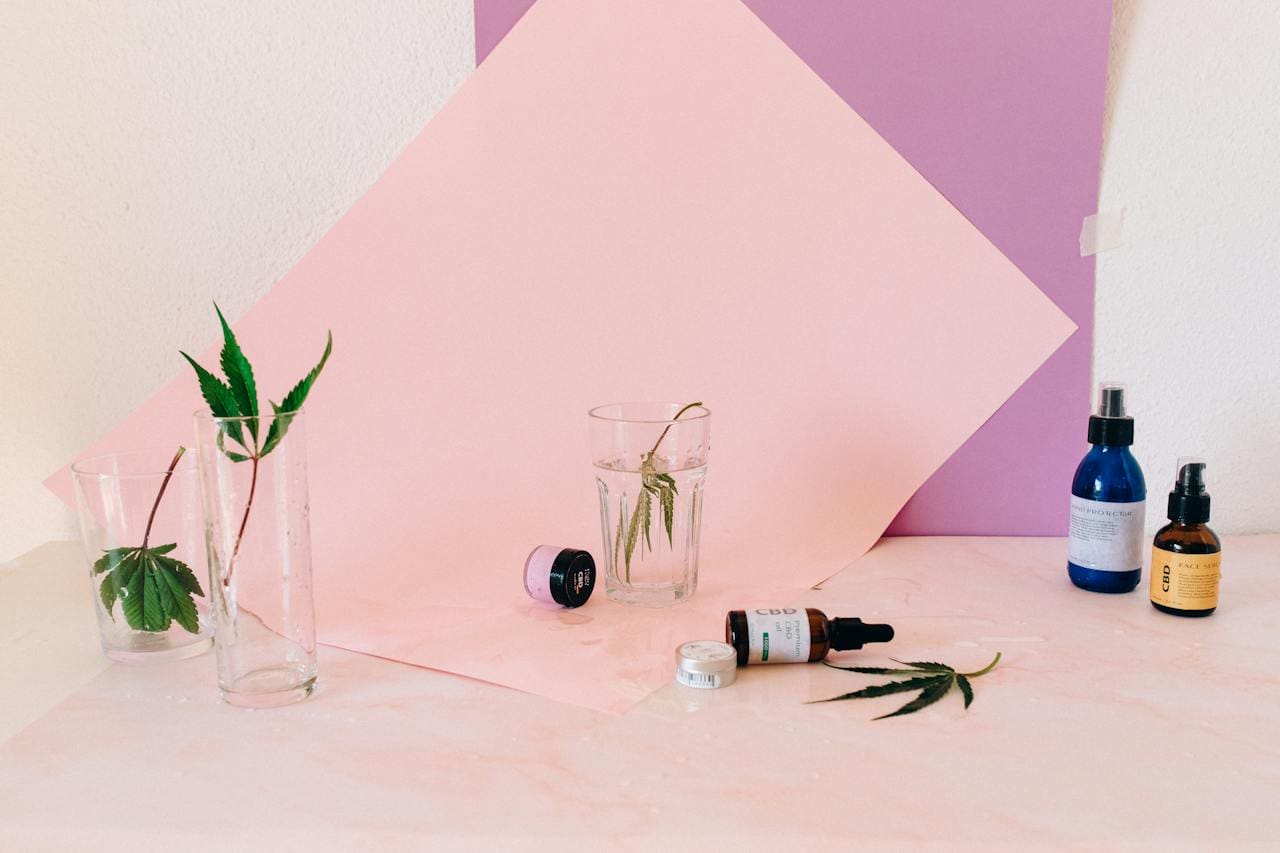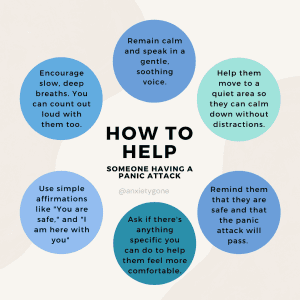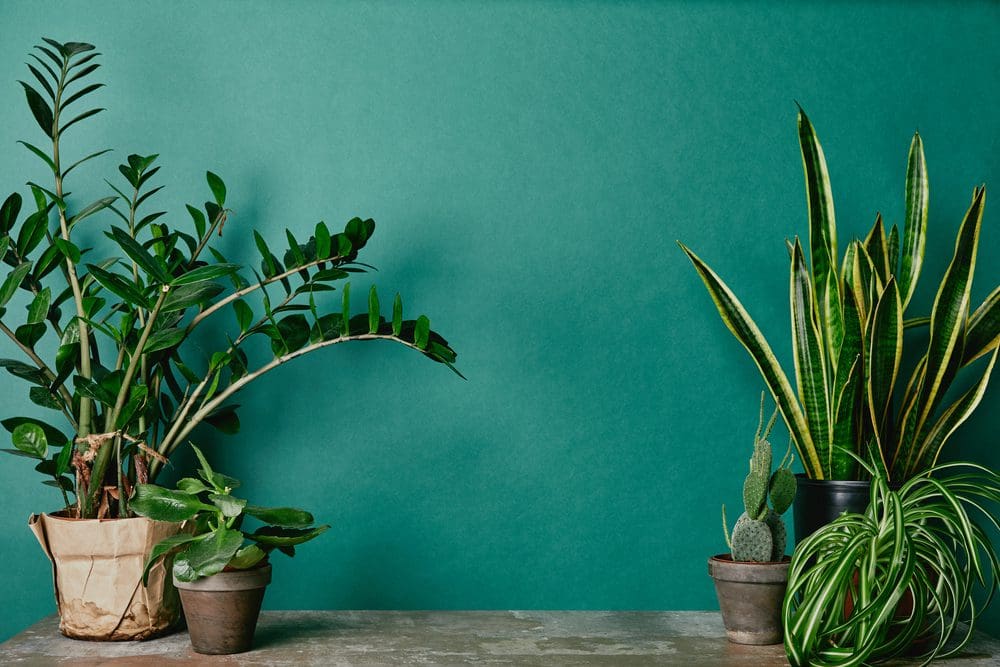Full Disclosure: Clicking on these links could mean a tiny commission for me, at no extra cost to you.
Panic attacks can be incredibly overwhelming and frightening, often striking without warning and leaving you feeling out of control. It feels like your body is at war with your mind and you’re the only soldier left fighting at the front lines. As panic rises, your body goes into fight or flight mode, which triggers that awful attack that leaves your mind running and your feet feeling weighed down like you’re drowning you in water. It’s absolutely terrifying, to put it simply. But it can be controlled and managed. Knowing how to calm a panic attack is crucial for managing anxiety and keeping those terrifying feelings at bay.
advertisement
Ready to start healing?
Anxiety is treatable with therapy, and BetterHelp offers a convenient and affordable solution. With over 20,000 licensed therapists available, BetterHelp provides accessible care, starting at just $65 per week . Take a free online assessment today to get matched with the right therapist for you.
Free AssessmentWhat is a Panic Attack?
A panic attack is a sudden episode of intense fear or anxiety that triggers severe physical reactions when there is no real danger or apparent cause.
- Rapid heart rate
- Sweating
- Trembling or shaking
- Shortness of breath
- Chest pain
- Nausea
- Dizziness or light-headedness
- Feeling of impending doom
Panic Attack vs. Anxiety Attack
Panic attacks and anxiety attacks are often used interchangeably but they are two very different experiences. As mentioned, panic attacks are sudden, intense episodes of overwhelming fear or discomfort that peak within minutes. There’s often no clear trigger responsible for the severe physical symptoms like rapid heart rate and chest pain.
In contrast, anxiety attacks build up gradually in response to stressors, lasting longer and characterized by prolonged worry and milder physical symptoms such as muscle tension and fatigue. Recognizing these differences is crucial for effective management and treatment. Although, if you know how to calm a panic attack, you also know how to calm anxiety attacks.
Techniques and Tips on How To Calm a Panic Attack
Learning what to do when you’re having a panic attack is just as important as learning what not to do in a panic attack. But we’ll get to that another day. For now, write these powerful techniques down and remember them the next time you’re searching for a way out.
1. Recognize the signs of a panic attack
Recognizing the signs of a panic attack is a crucial first step in calming it down. When you identify the symptoms early, such as rapid heart rate, shortness of breath, sweating, trembling, and an overwhelming sense of fear or impending doom, you can implement calming techniques more effectively. Acknowledging that you are experiencing a panic attack rather than a life-threatening event can reduce some of the fear and anxiety. Once you recognize the signs, try focusing on your breathing, using grounding techniques, and reminding yourself that the attack will pass. This awareness and prompt response can significantly decrease the intensity and duration of the panic attack.
2. Take deep breaths
The most powerful technique for learning how to calm a panic attack is to learn how to breathe through it. Focusing on your breath while having a panic attack (or an anxiety attack) can help reduce the severity of a panic attack, grounding you and soothing your nervous system.
Breathing exercises come in all shapes and sizes, so it’s important to try different ones to see which techniques resonate and work best for you. However, one of the easiest ones to practice (and remember when you’re in a panic) is this deep breathing exercise:
Box Breathing Technique:
- Inhale for a count of four
- Hold your breath for a count of four
- Exhale for a count of four
- Hold for a count of four
Deep breaths are a natural way to calm yourself down and by practicing when you aren’t having an attack, you can rely on it when you are. To maximize the benefits of breathing techniques, consider joining online guided breathwork classes. Get your first month free here.
3. Use grounding techniques
Grounding is an excellent form of natural treatment for anxiety and panic attacks, as it connects you with your surroundings, bringing you back to the present moment. This is particularly beneficial if you dissociate or have an out-of-body experience with your panic attacks.
There are various types of grounding techniques to use and the effects are powerful. It can be as simple as feeling your feet on the ground, or your hands on the steering wheel, or bracing yourself against a wall. You can hold onto a crystal for anxiety or rub your thumb on the ridges and holes of a crystal worry stone, or use engage your senses and notice the things around you.
A popular method is the 5-4-3-2-1 technique:
- 5 things you can see
- 4 things you can touch
- 3 things you can hear
- 2 things you can smell
- 1 thing you can taste
4. Use Affirmations
Using affirmations during a panic attack can be a powerful tool to help calm your mind and body. Positive affirmations are reassuring statements that you repeat to yourself, which can help counter negative thoughts and bring a sense of control. For example, during a panic attack, you can say to yourself:
- I am safe.
- This feeling will pass.
- I am in control of my breathing.
Repeating these affirmations for anxiety helps to interrupt the cycle of panic and anxiety, providing a mental anchor that brings you back to the present moment. By reinforcing a sense of safety and calm, affirmations can reduce the intensity of the panic attack and help you regain composure.
5. Get a breath of fresh air
Getting a breath of fresh air can be an effective way to calm a panic attack. Stepping outside and breathing in fresh air can help clear your mind and reduce feelings of suffocation and claustrophobia. The change in environment and the physical act of moving can also distract you from the immediate symptoms of the panic attack.
When outside, focus on taking slow, deep breaths to regulate your breathing and reduce hyperventilation. The natural surroundings and fresh air can promote a sense of calm, helping to lower your stress levels and bring your body back to a state of balance.
This simple act can be a quick and accessible way to manage and alleviate the symptoms of a panic attack.
advertisement
Access Treatment Right Now
→ Online Therapy - Speak with a licensed therapist today. Better Help offers online therapy starting at $65 per week. Free Assessment
→ Digital Psychiatry - Hims/Hers connects you with a licensed healthcare provider in just 12-48 hours and explore FDA-approved treatment options. No insurance required. Get started today!
6. Use the ‘Aware’ technique
The ‘AWARE’ technique is a practical approach to calming down during a panic attack. This method involves five steps:
- Acknowledge & Accept: Recognize that you are experiencing a panic attack and accept the feelings without resistance. Acknowledging the panic and accepting the sensations for what they are keeps you from feeding into the fear, which will reduce the symptoms.
- Wait & Watch: Give yourself time. Don’t rush to end the attack. Remind yourself that it will pass. While doing so, observe your anxiety without judging it to be good or bad. Move into your ‘observing’ self and study it. Rate it from 1 to 10, paying attention to when the panic goes up and goes down
- Actions: Engage in calming activities, like discreetly playing with your fidget ring or focusing on deep breathing.
- Repeat: Repeat the previous steps until you feel more in control. Remind yourself that this is a process and it might take a little time.
- Expect the Best & End: Conclude with a positive affirmation, such as “I am okay” or “I have handled this before and can do it again.”
By following the AWARE steps, you can methodically address your symptoms, maintain calm, and gradually bring the panic attack to an end.
7. Visualize Your Safe Space
Positive visualization is a powerful technique to calm a panic attack by mentally transporting yourself to a peaceful and serene place. When a panic attack strikes, close your eyes and vividly imagine a location where you feel safe and relaxed. This could be a beach with gentle waves, a quiet forest, or a cozy room in your home.
Focus on the sensory details: the sound of the waves, the smell of pine trees, or the warmth of a fireplace. By engaging your senses, you can distract your mind from the panic and create a sense of calm.
Visualizing a safe space can help reduce the intensity of the attack, grounding you in a comforting mental environment and allowing your body to relax.
8. Try Mindfulness Techniques
Mindfulness is an effective technique for calming a panic attack as it aims to bring your attention to the present moment and away from the anxious, intrusive thoughts and feelings. When you feel a panic attack coming on, focus on your breath and observe it without trying to change it. Pay attention to the sensation of the air entering and leaving your nostrils, the rise and fall of your chest, and the rhythm of your breathing.
You can also try mindful observation of your surroundings, noticing the colors, shapes, sounds, and textures around you. This practice helps anchor you in the present, reducing the spiraling thoughts that often accompany panic attacks. By staying grounded in the here and now, mindfulness can diminish the severity of a panic attack and restore a sense of calm and control.
9. Consider Cognitive Behavioral Therapy (CBT)
It’s important to seek professional help if panic attacks are frequent, severe, or interfere with your daily life. Cognitive Behavioral Therapy is a highly effective treatment for panic attacks. It helps you identify and challenge negative thought patterns and develop healthier ways of thinking.
How CBT Works
CBT focuses on the connection between thoughts, feelings, and behaviors. By changing negative thought patterns, you can alter your emotional responses and behaviors, reducing the occurrence of panic attacks.
And now, you can do therapy right from home. We recommend trying any of these top-rated online therapy services.
- Best for Availability: BetterHelp
- Best for Couples: ReGain or Our Ritual
- Best for Affordability: Better Talk
- Best for Psychiatry: Brightside
- Best for Teens: Teen Counseling
- Best for Anxiety and Depression: Brightside
- Best for LGBTQIA+: Pride Counseling
Helping Someone Else During a Panic Attack
Maybe you’ve found yourself on this article because you’re looking for a walk to help other people when they’re having a panic attack. First of all: good for you. The world needs more caring, compassionate people. Secondly, your support can significantly ease the person’s distress and help them regain a sense of control.
Here are some tips to help calm a panic attack that someone else is experiencing:
- Remember and recommend the calming techniques mentioned above
- Remain calm and speak in a gentle, soothing voice.
- Remind them that they are safe and that the panic attack will pass. Simple affirmations like “You are safe,” “This will pass,” and “I am here with you” can be very comforting.
- Encourage them to take slow, deep breaths. You can count out loud with them: inhale for four counts, hold for four counts, and exhale for four counts.
- If possible, help them move to a quieter, more private area where they can calm down without distractions.
- Offer a glass of water to help them stay hydrated and give them something to focus on.
- Ask what they need. Everyone’s experience with panic attacks is different. Ask if there’s anything specific you can do to help them feel more comfortable.
Keep in mind, some people may prefer to be alone during a panic attack. If they express this need, respect it, but stay close enough to offer help if they change their mind. After the panic attack has subsided, check in with them to see how they are feeling. Offer continued support and understanding.
Final Thoughts on How to Calm a Panic Attack
Calming a panic attack requires a combination of immediate techniques and long-term strategies. By understanding what triggers your attacks and implementing methods like breathing exercises, grounding techniques, and lifestyle changes, you can regain control over your anxiety. Remember, seeking professional help is important if your panic attacks are frequent or severe. With the right support and strategies, you can manage panic attacks and improve your overall mental health.
FAQs
- What should I do if I feel a panic attack coming on?
Try to focus on your breathing, use grounding techniques, and remind yourself that the attack will pass. - Can lifestyle changes really help prevent panic attacks?
Yes, regular exercise, a healthy diet, adequate sleep, and mindfulness practices can significantly reduce the frequency and severity of panic attacks. - Are there any natural remedies for panic attacks?
Natural remedies like herbal supplements (e.g., valerian root, chamomile), aromatherapy, and relaxation techniques can help some individuals manage anxiety. - How long does a panic attack usually last?
Panic attacks typically last between 5 to 20 minutes, though some symptoms may persist for a longer period. - Can children experience panic attacks?
Yes, children can experience panic attacks, and it’s important to seek professional help if they do. - Is it possible to completely cure panic attacks?
While there is no guaranteed cure, many people find significant relief through therapy, lifestyle changes, and medication.











